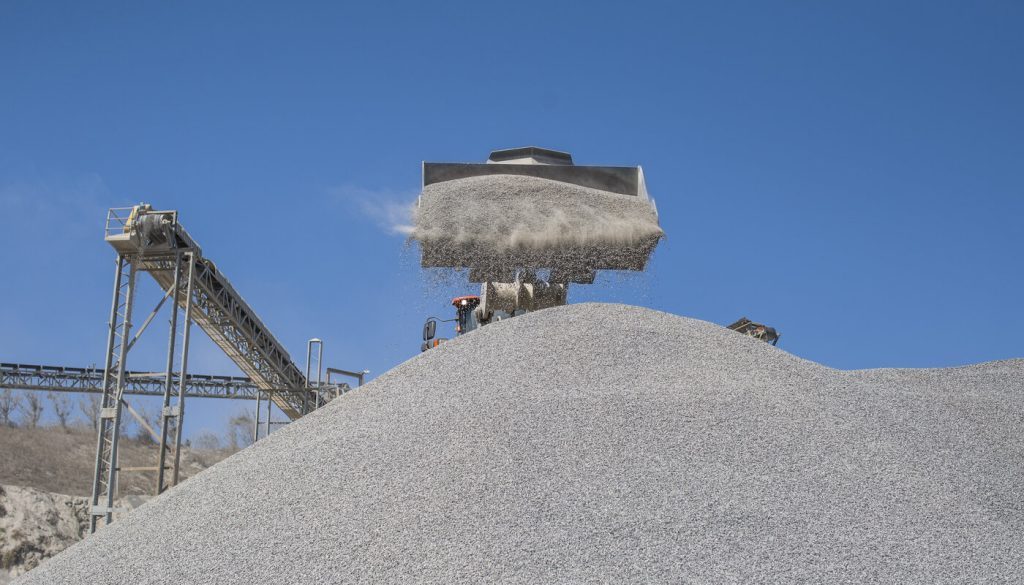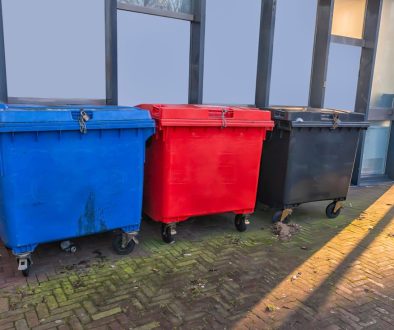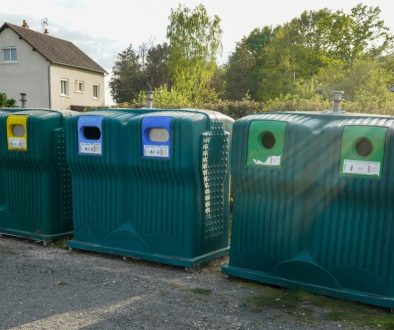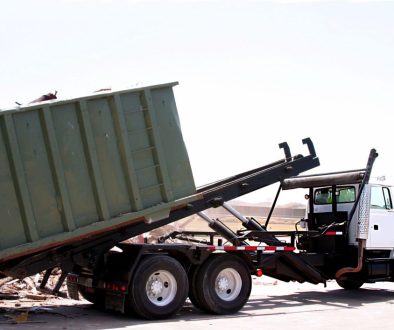In the UK, we mine a lot of stone. Of course, not every piece of stone can be used for building and construction projects. That’s why there are different types of aggregate, which are each suited for specific uses. With so many different types of aggregate, which is right for your next outdoor project for a home or business? Learn more about aggregate and what it’s commonly used for.
Sand
As the most widely used aggregate, sand is a versatile resource that is mined and used in a variety of applications.
Sand is used for filling trenches and excavations, as a base for roads, as aggregate in cement, as cement in concrete and to make glass. It is also used for abrasive and filtration needs. In construction, for instance, it’s often used in the production of concrete, mortar, plaster and stucco. Sand is useful for all types of outdoor projects, including landscaping, septic systems and more.
Typically, sand is composed of equal measures of silicon and oxygen and smaller amounts of other elements, such as aluminium, chromium, iron, magnesium, manganese, nickel, and zinc.
Gravel
Gravel is a loose rock in which the individual stone particles are larger than 2 mm in size. It’s typically made from larger pieces of crushed or broken stone that are usually angular in shape.
A mixture of stone and stone dust, gravel is a building material that is used in driveways, paths and walkways. They’re also commonly used for riverbeds and for drainage and erosion control. It’s also used to make concrete, concrete blocks, concrete pavers, rip rap and other types of construction.
Gravel can contain small quantities of quartz, feldspar, mica, and other minerals, which can be used in other applications. These minerals make gravel a versatile material, which is why it’s so common in landscaping projects, with its many uses.
Stone Dust
Stone dust is not composed of stones but instead, is made from particles of stone that are finer particles than gravel. The material is composed of particles smaller than 1 mm.
Stone dust is used in cement, concrete, mortar and plaster. It’s also used for metal casting, plating and as a filler for rubber compounds.
Crushed Stone
Crushed stone is a mixture of stone and stone dust that has been crushed into smaller pieces. It is graded and used for road surfacing and building foundations. The most common types of crushed stone are sandstone, limestone, granite, basalt and slate. It is also used for drainage, railway ballast and for aggregates in concrete, plaster, concrete and mortar.
Crushed stone is typically used in a wide range of projects, from commercial applications to residential uses. It is a popular material for many building projects, as well as for paving driveways, walkways and steps.
Fill
Used for ground-level construction and building, fill is the smallest size of aggregate. It is used for landscaping and other outdoor construction projects. Fill is commonly used in airport runways and to level building sites. There are several types of fill that can be used for different applications.
For example, sandy or clay-like materials are used for erosion control and for filling in areas that are unstable. Large rocks and boulders can also be used as fill. These are useful in construction, drainage and erosion control.
Tailings
Tailings are materials from a large, man-made excavation project, such as a mine or quarry. They are often made from waste materials that result from a mining process. Tailings are composed of sand, gravel, cobble and clay. They may also contain chemicals and minerals from the mining process.
Tailings are useful for construction projects and landscaping. As an aggregate, these materials are commonly used for building roads and highways and for avalanche control. They’re also useful for levees, embankments and dams.
Processed Stone
Processed stone is a mixture of stone and stone dust that is washed, crushed and sorted by size and density. It is used in construction and landscaping projects, as well as in the manufacturing of concrete and cement. It is a popular building material that is used for driveways, paths and walkways, as well as for drainage systems.
Rock
Rock is a naturally occurring solid aggregate that is used as a building material. There are many types of rock, including metamorphic and igneous rocks. It is typically divided into four groups: magmatic, sedimentary, metamorphic and igneous rocks.
Rock is a versatile material that is used in a number of applications. It is often used for landscaping projects, such as walkways and retaining walls. It is also used for buildings and many different types of construction. Granite, limestone and sandstone, for example, are often used in construction, restoration and landscaping projects.
Fluidised Sand
Fluidised sand is a type of sand that has been used in coal-fired power stations, cement plants and other industrial processes that require a large amount of heat. It is a more porous form of sand and is usually utilised once the coal has been burned and its ash has been removed.
As a type of aggregate, fluidised sand is used to make glass and in the construction of structures that require a solid base, such as buildings or bridges. It is also used to fill ground holes and level roads and driveways. Fluidised sand is also used to prepare artificial turf fields.
Soil
Soil is not technically an aggregate, but it can be used to build up an area that normally contains fill, for instance. Soil is very common throughout the UK, but it’s not used for building. It is often used for landscaping and gardening, as a base for a building site, for raising the sides of a pond and for building a retaining wall.
Conclusion
Aggregate is a very important resource, especially in the UK. It’s used for a variety of building, landscaping, residential, and commercial needs. By knowing what aggregate is, and what it can be used for, you can find the right aggregate for your outdoor project.
Enviro Skip Hire is a family run skip hire and aggregate company servicing Staffordshire. Our mission is to make the process of hiring a skip easier and more convenient. Regardless of how big or small your project is, you’ll find skip hire in Stafford, Crewe, Middlewich, Chester and surrounding areas. Contact us today to learn more about our skip hire services.




